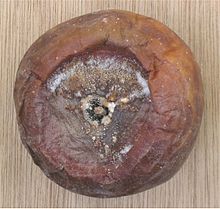
Mycology is the branch of biology concerned with the study of fungi, including their genetic and biochemical properties, their taxonomy and their use to humans, including as a source for tinder, traditional medicine, food, and entheogens, as well as their dangers, such as toxicity or infection.
Gordon Herriot Cunningham, CBE, FRS was the first New Zealand-based mycologist and plant pathologist. In 1936 he was appointed the first director of the DSIR Plant Diseases Division. Cunningham established the New Zealand Fungal Herbarium, and he published extensively on taxonomy of many fungal groups. He is regarded as the 'Father' of New Zealand mycology.

Pythiaceae is a family of water moulds. The family includes serious plant and animal pathogens in the genus Pythium. The family was circumscribed by German mycologist Joseph Schröter in 1893.
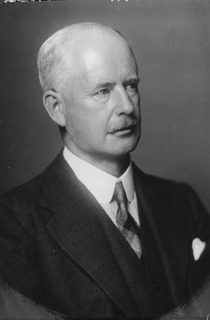
Sir Edwin John Butler FRS was an Irish mycologist and plant pathologist. He became the Imperial Mycologist in India and later the first director of the Imperial Bureau of Mycology in England. He was knighted in 1939. During his twenty years in India, he began large scale surveys on fungi and plant pathology and published the landmark book Fungi and Disease in Plants: An Introduction to the Diseases of Field and Plantation Crops, especially those of India and the East (1918) and has been called the Father of Mycology and Plant Pathology in India.

The Corticiales are an order of fungi in the class Agaricomycetes. The order is composed of corticioid fungi. Species within the order are generally saprotrophic, most of them wood-rotters, but several are parasitic on grasses or lichens. Plant pathogens of economic importance include Erythricium salmonicolor, Laetisaria fuciformis, Waitea circinata, Waitea oryzae, and Waitea zeae.
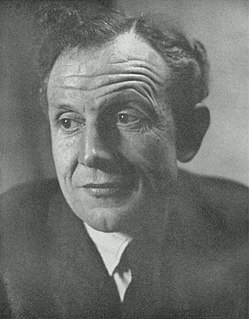
Geoffrey Clough Ainsworth was a British mycologist and scientific historian. He was the older brother of Ruth Ainsworth.

Worthington George Smith was an English cartoonist and illustrator, archaeologist, plant pathologist, and mycologist.
Richard William George Dennis, PhD, was an English mycologist and plant pathologist.

Rhizoctonia is a genus of fungi in the order Cantharellales. Species form thin, effused, corticioid basidiocarps, but are most frequently found in their sterile, anamorphic state. Rhizoctonia species are saprotrophic, but some are also facultative plant pathogens, causing commercially important crop diseases. Some are also endomycorrhizal associates of orchids. The genus name was formerly used to accommodate many superficially similar, but unrelated fungi.
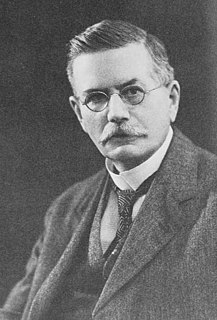
Thomas Petch was a prolific English mycologist and plant pathologist best remembered for his work on the interaction between fungi and insects.

Flora Wambaugh Patterson (1847–1928) was an American mycologist, and the first female plant pathologist hired by the United States Department of Agriculture. She ran the US National Fungus Collections for almost thirty years, radically growing the collection and shaping its direction, and supervised or discovered numerous significant fungal diseases.
Rudolf Ferdinand Theodor Aderhold was a German mycologist and pomologist.
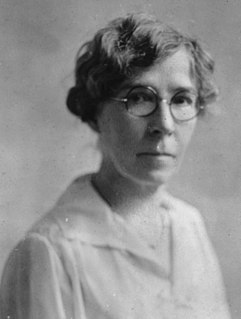
Vera Katherine Charles (1877–1954) was an American mycologist. She was one of the first women to be appointed to professional positions within the U.S. Department of Agriculture. Charles coauthored several articles on mushrooms while working for the USDA.

Ethel Mary Doidge (1887–1965) was a British born, South African mycologist and bacteriologist. Doidge was born in Nottingham, England on 31 May 1887 and was educated in South Africa at Epworth School in Pietermaritzburg and Huguenot College, Wellington, Western Cape. In 1908 she joined the Transvaal Department of Agriculture as an assistant to Dr I.B. Pole Evans. In 1909 she was awarded a M.A. degree by the University of the Cape of Good Hope, and in 1914 she earned a D.Sc; she was the first woman to obtain a doctorate in South Africa. Her thesis was entitled A bacterial disease of mango, Bacillus mangiferae. This bacterial disease of mango, Bacillus mangiferae was previously unknown outside South Africa and caused considerable loss to mango growers there for some years. In 1912 she was elected a Fellow of the Linnean Society (F.L.S). She was appointed assistant chief of the Division of Botany and Plant Pathology in 1919 and became principal plant pathologist in 1929, a position she held until her retirement in 1942. Her services were retained for a further four years, during which time she completed her work on The South African fungi and lichens.
Anna Eliza Jenkins was an American mycologist. She specialized in phytopathology, particularly the fungi responsible for "spot anthracnoses", including Sphaceloma and Elsinoe.
Effie Almira Southworth Spalding (1860–1947), was an American botanist and mycologist, and the first woman plant pathologist hired by the United States Department of Agriculture (USDA). Her most important discovery was the 1887 identification of the fungus Colletotrichum gossypii as the cause of cotton cankers, a disease which killed thousands of acres of cotton and was a major economic threat. She taught botany at several institutions, worked at the Desert Botanical Laboratory with her husband, and established the Botany Department Herbarium at the University of Southern California.
Neil Everett Stevens was an American mycologist and plant pathologist. He served as president of the Botanical Society of Washington (1931), American Phytopathological Society (1934), and Botanical Society of America (1948). His research chiefly concerned fungal diseases of crops such as chestnuts, strawberries, cranberries, currant, and corn. Stevens was born in Portland, Maine, graduated from Bates College in 1908, and earned a PhD. from Yale University in 1911. He was instructor at Kansas State College from 1911 to 1912, then worked at the Bureau of Plant Industry of the U.S. Department of Agriculture from 1912 to 1936. He worked as adjunct professor at George Washington University from 1931 to 1936, then professor of botany and plant pathology at the University of Illinois from 1936 to 1949.
Kenneth A. Harrison was a Canadian mycologist. He was for many years a plant pathologist at what is now the Atlantic Food and Horticulture Research Centre in Nova Scotia. After retirement, he contributed to the taxonomy of the Agaricomycotina, particularly the tooth fungi of the families Hydnaceae and Bankeraceae, in which he described several new species.
Mandayam Jeersannidhi Thirumalachar was an Indian mycologist, microbiologist, plant pathologist and the co-founder of Jeersannidhi-Anderson Institute, California. He was the head of R&D at Hindustan Antibiotics Limited and a professor at Banaras Hindu University as well as the Central College of Bangalore. He was known for the development of antifungal antibiotics such as Hamycin, Dermostatin, Aureofungin, MYc-4 and Tetraenenin and was an elected fellow of the Indian National Science Academy. The Council of Scientific and Industrial Research, the apex agency of the Government of India for scientific research, awarded him the Shanti Swarup Bhatnagar Prize for Science and Technology, one of the highest Indian science awards for his contributions to Medical Sciences in 1967.
Daniel McAlpine was a Scottish-born Australian mycologist known for his research in plant pathology. He wrote several publications on plant disease in many crops and other plants. McAlpine was a lecturer in biology at the University of Melbourne from 1884, and, with his appointment to the Victorian Department of Agriculture from 1890 to 1911, became the British Empire's first professional plant pathologist.
